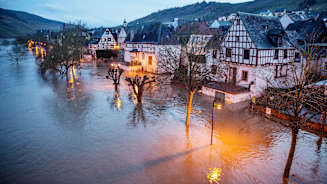As matters of policy, practicality and mission assurance, federal agencies must fold the potential for
climate-related disasters into their risk planning. The case for climate risk planning for a federal agency like
FEMA might be as obvious as it is crucial. But in reality, nearly every agency faces risk from the increasing number
of weather, fire and flood disasters.
Knowing and understanding risk, and planning for mitigation, require a methodical approach to using data, risk models
and developing staff expertise.
“Knowing your risk is an essential part of carrying out your mission,” says Andy Neal, managing director of Aon’s
Public Sector Partnership and former chief actuary at FEMA. Every agency, as part of its risk management, must hire
or develop in-house the expertise to understand its specific climate-related exposure to shape better decisions,
says Neal.
That’s the idea behind Aon’s launch of Climate Risk
Advisory. It was “driven by clients demanding an increasing focus
across a wide set of industries on climate risk,” comments Liz Henderson, who heads the Climate Risk Advisory unit,
as well as catastrophe analytics for the Americas at Aon’s Reinsurance Solutions. Because it monitors
climate-related risks across the economy, the insurance industry has a large body of climate risk and disaster cost
data and insight. “We recognize that all of this great insight on modeling climate-related risks is locked up within
the industry itself,” adds Henderson. Hence the advisory service, which disseminates knowledge and helps clients to
navigate volatility and build resilience.
Federal agencies and contractors, no less than other economic entities, tend to focus on the long-term risks from
climate change — potential changes over the next 20 or 40 years. However, a complete risk mitigation strategy must
start with the here and now.
“But what actually is really, really important, and where we find a significant gap, is that people don't really
understand what their risk is today. A complete risk mitigation strategy must start with the here and now.”
– Liz Henderson, Global Head of Climate Risk Advisory & Head of U.S. Catastrophe Analytics, Reinsurance
Solutions, North America































































































































































































































































































































































